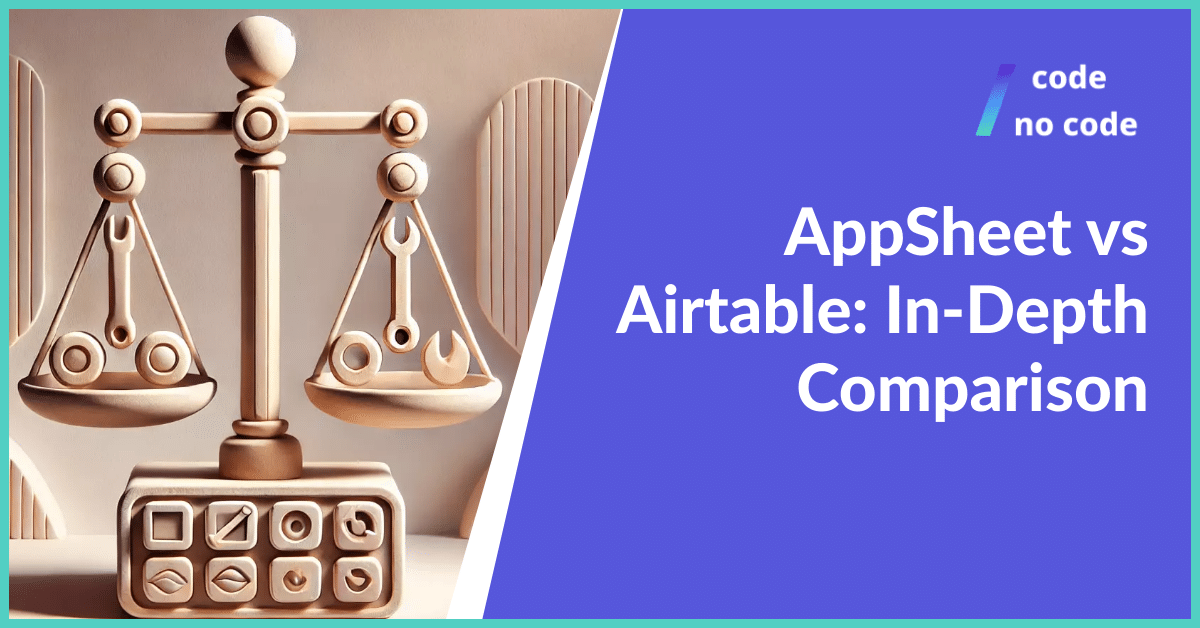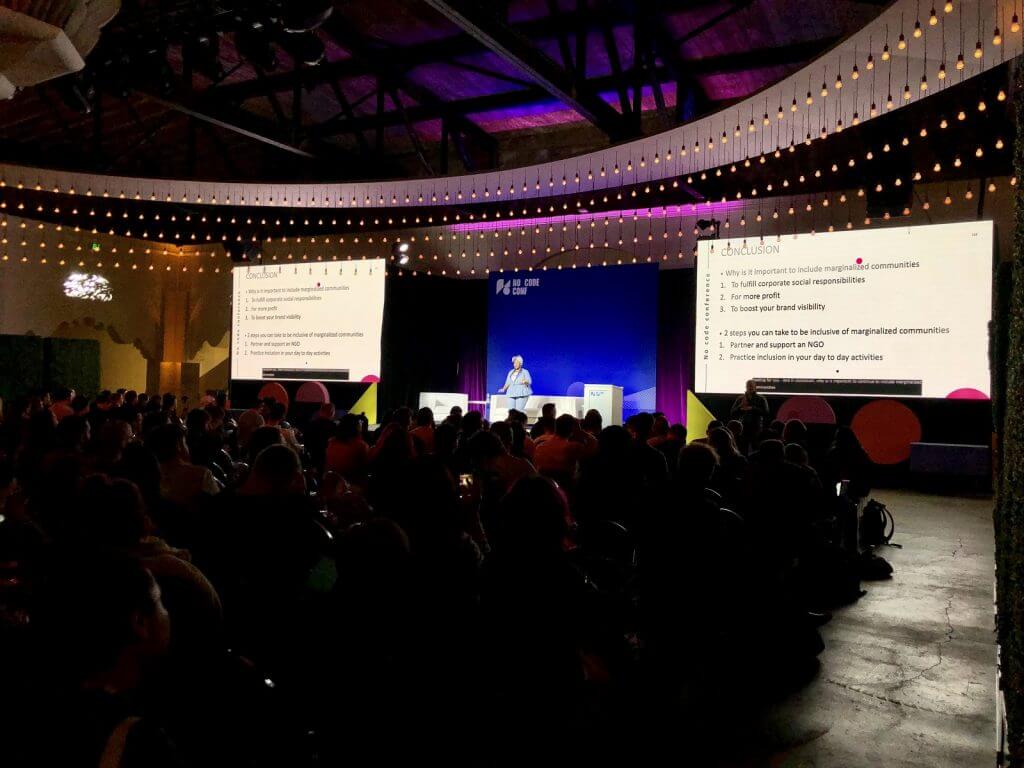
AppSheet vs Airtable: In-Depth Comparison
If you’re deciding between AppSheet and Airtable, knowing their differences is important. Both tools are designed to build apps and manage data without coding. This guide will...
Are you a business owner integrating computing into your business? Imagine if you could create functional applications without technical knowledge of programming languages. No one knows your business model better than you. So, no one should be able to develop a better-suited business application than you can. Or do you run a budding enterprise? Wouldn’t it be a game-changer if you didn’t have to pay the high costs demanded by professional programmers? Since your ideas are still in the preliminary stages, cost-effectiveness is paramount.

Groups and individuals of varying niches stand to gain a lot from automating coding. Well, guess what? That prospect is a present-day reality with Low Code and No Code platforms.
Before we go any further, it’s essential to know the difference between low code and no code. No Code technology functions best for businesses and works well for simple functions. However, Low Code solutions are better than no code platforms in business applications that are more complex. That is because developers essentially use Low Code to write custom code using visual tools. But for a No Code platform user, the focus is more on front-end use cases.
Forrester Research first coined the term[1] Low Code. And as an answer to what it means precisely, they say:
“Low Code platforms enable rapid delivery of business applications with a minimum of hand-coding and minimal upfront investment in setup training, and development.”
Gartner, who helped them globalize the term, also defines it similarly[2]:
“Low Code development describes platforms that abstract away from code and offer an integrated set of tools to accelerate app delivery.”
Stripped of technological jargon, what Gartner and Forrester Research have said is simple. Low Code refers to the answer to the long-standing wish to efficiently automate coding.

Many consider Low Code and No Code development as a new generation technology. Consequently, people have a lot of questions about its sustainability and functionality. But, knowing where it began will answer all these doubts. The history of Low Code finds root in the original purpose of programming language design and computation.
Discussing concepts of computation and programming language utility separately doesn’t yield much detail. And most computer operators are clueless about programming languages.
Yet, from the onset of computation, there shouldn’t have been a rift. Instead, everyday users, computers, and programming languages were to work in harmony.
Grace Hopper backed up this point[3] at the first HOPL conference in 1978. She denoted the dual purpose of any programming language as:
1. To write applications with minimal effort.
2. To enable non-specialists to solve problems using computers.
Thus, the need to broaden the scope of operators capable of using computer programs became a priority. That was why IBM invented FORTRAN, the first user-accessible high-level language.

Image Credit: Hitesh Choudgary
Electronic computers first came about in the 1940s. Then, experts used assembly languages to program. That involved manually inputting ones and zeroes to give simple commands.
The complexity that came with that was horrible. That’s why FORTRAN was somewhat an approximate Low Code platform at the time.
With the invention of FORTRAN, developers rightly believed code was now simplified. So, it’s safe to say that FORTRAN founded the concept of Low Code technology. Developers even used the term “Auto-Code” to describe it then.
Yet, while it was a breakthrough technology, FORTRAN had critical user limitations. It was insufficient in functionality. Furthermore, it did not bridge the gap between non-specialist operators and coding languages.
Using FORTRAN demanded many things of users. For one, they needed a sound grasp of mathematical and scientific concepts, formulae, and notations.
Another step towards low code technology came in 1959 with COBOL. Everyday users did not have the level of prerequisite knowledge to operate FORTRAN. COBOL was less complicated. It used less complex notations and more English in its syntax.
In addition, COBOL was not as limiting as FORTRAN. FORTRAN functioned primarily for high-performance, numeric and scientific computing. On the other hand, COBOL found critical application in business.

Image Credit: Markus Spiske
Of course, it could still handle more complex tasks like FORTRAN. But the aim was for it to be valuable to everyday users.
The following years came with a radical improvement in the coding language versatility. Computer programs could then perform and solve tasks in all aspects of everyday life. C was the earliest of one of such coding languages that gave programs those capabilities.
Developed in 1972, C used an essentially English-based syntax to build software applications. That opened the door for major digital transformation in the computing world.
Software apps became even more powerful and easier to create when C++ came around. It brilliantly showcased the building blocks of object-oriented programming – inheritance, polymorphism, and encapsulation.
Then with the rise of the internet came C#, which tailors best for web applications. That became the driving force for some of the new breed of programming languages today, including Python, Java, PHP, and the likes, supporting object-oriented programming.
All the languages mentioned above are classifiable under Third Generation Languages (3GL). However, as an overlap, Fourth Generation Languages came about between the 1970s and the 1990s. That truly marked the groundwork for low code development platforms (LCDP).
The first innovations to spark interest in the concept of low code platforms were the 4GLs. That includes languages such as SQL, ABAP, Oracle Reports, Unix Shell, R, and PL/SQL. They are non-procedural specification languages. In addition, they support the graphical user interface, database management, and web dev projects.
Developers argued that 4GL technologies expose the development environment to users themselves. This meant that non-programmers could create applications using essentially codeless tools.
Improvements followed by introducing computer-assisted software engineering (CASE) and primordial Rapid Application Development (RAD) tools.

Image Credit: Luis Gomes
RAD tools first came about in the 1990s. They were promising solutions to simplify and speed up the application development process. And, of course, they were to do so without writing 3GL code. Tools like Visual Basic, Visual Cafe, Delphi, and Oracle Forms fall under this RAD umbrella.
RAD tools functioned under one basic principle. Users would focus more on the design of logic instead of writing code. That is, they would interact with a development environment that focuses more on the GUI and business logic.
However, both the 4GL technologies and early RADs had their pitfalls;
In 2001, the Object Management Group (OMG) unveiled Model-Driven Architecture. That was a new approach to software development, design, and implementation.
The process starts by creating models or adapting already-existing ones. Generators and interpreters then transform these models into executable code.
However, mobile apps were the biggest stride towards automated coding in the 2000s. During this time, Apple launched the iPhone iOS platform.
Soon after, Google launched its Android platform also. Developers then created mobile apps to run on these devices. Some of the earlier tools used for this were Android Studio and XCode.
Following this new breed of technology came Progressive Web Apps (PWAs). With this, web apps and their development were accessible and simplified. This was significant progress for Low Code or No Code development. Yet, it was insufficient.
Simple and static software and web applications were easier to create then. But, business users, for example, required rather complex applications. To write code for such business applications without expert developers was impossible.
You’ll be wondering if the concept of a Low Code/No Code development platform is even achievable. It wasn’t until 2016 before the renaissance of the Low Code/No Code movement took off.

Image Credit: Cottonbro
Developers have learned to approach Low Code and No Code solutions differently. This entails involving non-specialists in the actual development work.
Forrester Group and Gartner were the first to define a Low Code development platform formally. They defined and introduced its revitalized concept in 2016, but LCDP origins date back to 2011.
Low Code or No Code platforms are the very exhibitions of visual programming. A business user with an LCDP can bypass the need for much training. Furthermore, they offset expensive professional programmer costs and overcome time constraints.
LCDPs respond to convenient user interfaces to build applications. This consists of drag and drop features and switch toggling, naming a few. Also, the internet is full of readily available modules and templates for LCDPs.
We’ve taken a deep delve into the evolution of programming languages and the brief history of Low Code. So observing the trend as it progresses, it’s easy to predict the future. The future of the development world screams Low Code and No Code platforms.
But the future of development seems to be here already. Gartner predicts that Low Code platforms will account for up to 65% of applications by 2024.
Read the detailed predictions we made in our article on the future of No Code, together with a more detailed account of the recent developments in the sphere.

Many past innovative technologies for Low Code and No Code development have become obsolete, primarily due to their inadequacies and inefficiency. Modern-day low code vendors show that they have studied history and highlighted the problems their predecessors faced. They then tailor their systems to counter these drawbacks.
What’s the catch? Well, like all other innovations, there’s always room for improvement. But honestly speaking, there’s not much else left to want.
Interested in what No Code and Low Code can do nowadays? Read our extensive guide on What is No Code.